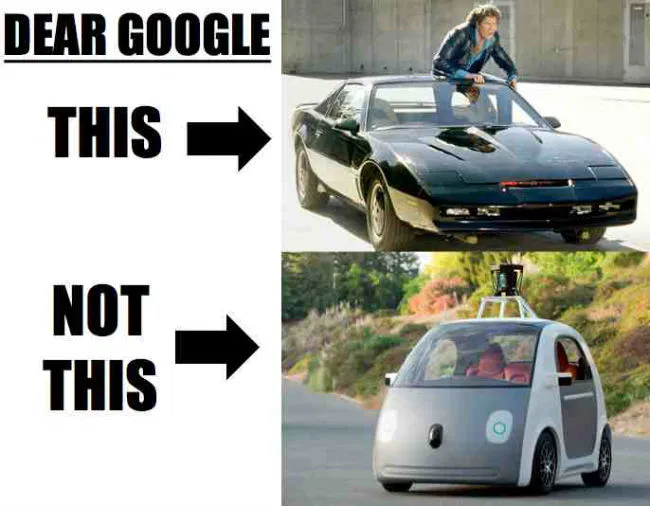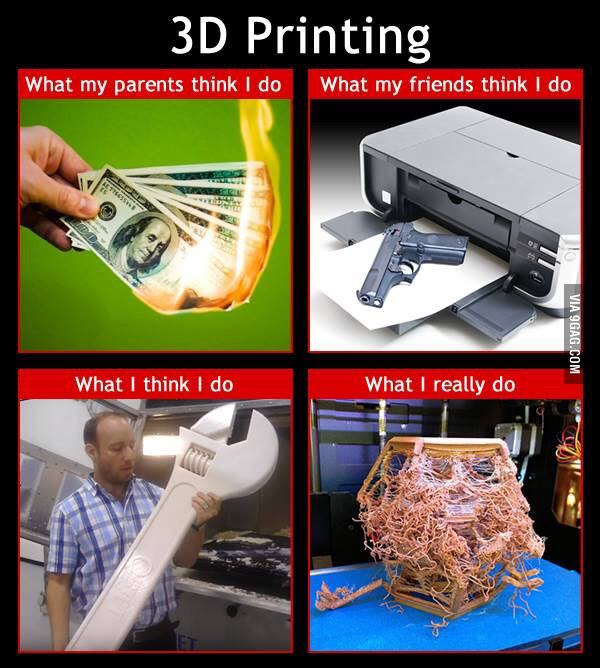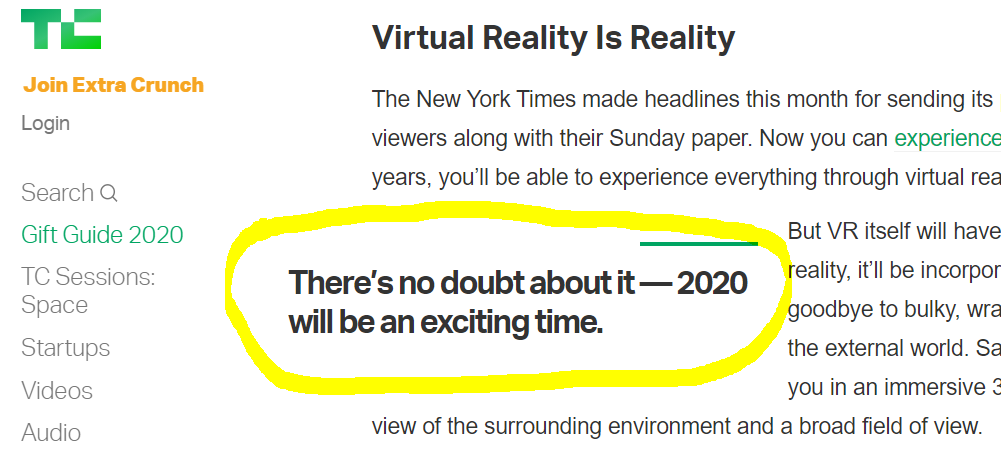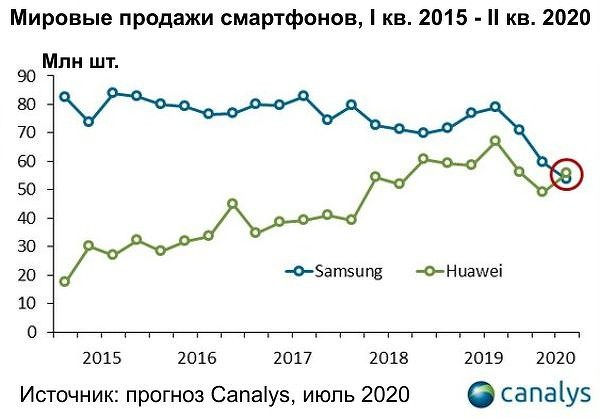This year, in December, we are 5 years old. Back in 2015, we came to the most dynamic and fastest world of technology. Indeed, if for some industries the five-year plan is just a development plan, then for IT specialists it is revolution after revolution.
Sometimes it is extremely difficult to predict what will happen at the end of this year, and not only after a huge period by the standards of our sphere. Nevertheless, brave experts in 2015 talked about how they see the world in 2020, which technologies will prevail, which technologies will disappear, where medicine and science will step, how clouds and servers will look, and what will become of business. To be honest, we have not come across a single prediction like “AAAAA !!! Don't go to 2020 ”, on the contrary, they smiled as they studied what a brave new world we were to live in.
Will you walk along these mental plans with us?

World around us
▍Unmanned cars literally flooded everything
In 2015, a huge block of predictions in various sources was aimed at confidently introducing self-driving cars into our daily life in 2020.
Independent reporters in 2015 talked about how BMW, Audi and Mercedes launched fabulously huge campaigns to hire software developers to replace mechanical engineers by 2020 and provide the world with autonomous cars. However, even then, experts did not share the bright hopes of journalists and noted the legal problems of launching drones on city streets. In particular, the head of unmanned BMW projects, Michael Eberhard, in 2015 carefully called the deadline "after 2020", and then he did not start fantasizing about a car without a driver, but noted that these would be shifts towards the fact that the driver while driving will be able to drive, view e-mail, read the news, call someone. He noted that the car will call the driver for help at the right time.
No, well, judging by the measure of Mr. Eberhard's words, in Russia all BMWs (and others too) became unmanned long before 2020, because reading the news, writing to a chat, and even more so calling at full speed is always welcome. (We at RUVDS condemn unsafe behavior on the road and remind that using a mobile phone while driving is an administrative offense). Well , joking aside , self -driving cars are really developing quite intensively - from supercars to working heavyweights ( testing of unmanned Kamaz trucks started in December 2019 , unmanned Volvo trucks are already working). However, legal issues, economic and even political aspects still leave us without self-driving cars on the roads. And it's hard to say how close the future is. But it is already possible to predict for sure that it will happen.

▍3D and living souls
At the end of autumn 2015, Business Insider magazine decided to make a detailed forecast for 2020, for which he called on Ray Kurzweil, a futurist and artificial intelligence specialist at Google (it is believed that his predictions come true 86% of cases). As a result, he talked more about 2030, but 2020 also got it.
For example, Kurzweil promised that by 2020 we "can live very well and print everything we need." It was about 3D printing - the futurist believed that 3D modeling will become a large-scale project, there will be many open source solutions and most of the world will become solid information technologies.
In 2015-2017, there was a boom in 3D printers, there was not a day when articles were not published on Habré (Geektimes) and in other publications, geeks discussed materials for printing and laid out diagrams on GitHub. Indeed, 3D printing remains a promising technology in medicine, biology, space, construction, design, modeling, etc., however, in the consumer segment, 3D printers have remained the interest of a rather narrow group of DIY fans.
This was partly due to the cost of good materials and consumables for printing, partly because of the burden of these colossus on the area of human housing, partly because of the colossal time required to achieve a decent, shameful result. In any case, it is still cheaper to buy a good quality item than to print it yourself.

But one prediction has already begun to come true - and, frankly, it is difficult to relate to this somehow unequivocally. We are talking about various kinds of digital copies of deceased people. Kurzweil suggested that by the 2030s, we could plant nanobots in people's brains to extract memories of loved ones. Combined with the deceased's DNA, this information should form the basis of a convincing virtual version of the departed relative.
Over the past five years, the scientific world has advanced in this technology, in particular, we have witnessed a resonant meeting of a mother with a virtual copy of her deceased daughter. In this case, virtual reality glasses and glasses with sensors helped.
Microsoft also patented technology to create digital copies of people, including the dead. Both social networks and large technology corporations are concerned about "digital copies". An additional acceleration in the development of projects is given by the prospect of monetization of such services, although the issue of ethics is still open.
And who knows, maybe the cancer will not be defeated yet, and this episode of Solaris will become almost a reality:

▍ Cancer treatment on the same day
One of the challenges facing oncologists is the ability and ability to begin treatment on the day of diagnosis. Indeed, precious weeks, if not months, are often lost between the first sounded diagnosis and the appointment of productive treatment. In 2015, Forbes experts suggested that by 2020 the problem would be solved thanks to the work with big data and the exchange of information - it was for these purposes that the Oregon University of Health launched the Collaborative Cancer Cloud project, which stores and “rummages” huge volumes of anonymous data of patients with oncological diseases.
It was assumed that new technologies would help doctors analyze a patient's condition for several hours and immediately, on the same day, begin treatment based on the experience of other people with a closely comparable form of the disease and the same environment. All this could be possible thanks to the analysis of the genes of already sick people. As of 2015, only 2% of cancer patients have sequenced their genes, and this proportion was expected to be huge by 2020.
In connection with such prospects, scientists expected success in the treatment of other gene-related diseases: Alzheimer's disease, diabetes mellitus, autism, etc.
Alas, the start of prescribing treatment for cancer patients is still far from the initial diagnosis. Alzheimer's disease, diabetes mellitus and autism are still incurable, and diabetes is generally becoming the scourge of humanity.
But, it should be noted, the experts made no mistake in their forecasts: 2020 became the world year of medicine and medical research, scientists around the world passed on information to each other about the decoded genome and the mutations that had arisen - however, all this mainly concerned 2019-nCoV. And you don't need to be a medical luminary to predict that most of the medical discoveries and inventions of 2021 will be related to COVID-19. But there is great hope and even a serious chance that all virology will move forward, ways will be found to defeat or significantly alleviate HIV, hepatitis C, influenza, pneumonia, etc. Humanity has a huge collection of viruses and any step in virology can make our lives longer and better.
▍Internet to half of humanity and the start of 5G
At the beginning of 2015, the UN made a forecast that in 2015 the number of Internet users worldwide will reach 4 billion.Then IT experts were outraged, referred to a slowdown in the growth of new connections and infrastructure problems, and said that such a threshold could be overcome only by 2020.
The experts were right: by the beginning of 2020 alone, the number of Internet users in the world reached 4.1 billion. This is just over 53% of the world's population. According to the International Telecommunication Union, the highest rate (82.5%) is in Europe, the lowest (28.2%) is expected in Africa. 96% of the world's population is in the area of access to a mobile digital signal (but this, of course, does not equal 4G and even more so 5G).
Speaking of 5G. Everyone promised, but it was rather a calculated technological forecast. Many agreed that the rollout of 5G networks will start in 2020. It has started, there are many problems, there are many tasks, and the matter is far from regarding the population. But this start cannot be stopped.

5G schematic diagram
▍Virtual reality is real
Another industry that has not fully met expectations is VR, virtual reality. Experts predicted a $ 15.89 billion market for VR technologies and devices in 2020 and believed that this direction will enter the fiercest competition with mobile applications.
The VR market has really grown in two main directions: as a means of training and catering to the production needs of enterprises, and in terms of improving the user experience. By 2021, the world was waiting for virtual reality devices from Google and Apple. At the beginning of 2020, the market growth was predicted for the year to $ 18.8 billion.However, in 2020, VR technologies fell back by almost 7% and what will happen next is not clear, since, in addition to closed borders and logistical problems, political factors intervened in technological trends and complicated relations between the customer country and the country of manufacture. However, experts are optimistic about 2021 and believe that the growth of VR is inevitable, and the technology itself is interesting both from the point of view of science and the real sector, and from the point of view of the entertainment industry.

▍Ah, Alice, how to chat about everything?
I clearly remember my 2015 - then I had my first orders from Amazon, around the end of autumn. And then on Amazon itself, I read about the Amazon Echo smart speaker released on June 23, 2015 with Alexa on board. Then it seemed like something incomprehensible, another gadget with no special prospects. But experts were already discussing with might and main how to improve Siri, Alexa, Cortana, etc. They already existed, but they still seemed very, very soulless robots. Here are quotes from some experts at the time:
"The future is that the device is always on and listening to you."
"You might be talking to your wife about 'let's go to this movie tonight' and you don't really have to do anything or ask, the device automatically orders."
“They have names. They usually have gender. They often have temperament, personality and a set of bad jokes. "
No, Alice, did you hear? These leather bags called your humor bad. Oh, no, it's not about you. I remember how you came out in October 2017, and by the beginning of 2020 you had conquered 45 million people.
No, I'm not crazy, Alice, and really, an intelligent voice assistant. Siri has become no less smart and "emotional", we find voice interfaces everywhere - and most importantly, they inhabit not only our mobile phones, but also other things, for example, smart speakers. This is one of the predictions that came true one hundred percent and even a little more.
By the way, for the experiment I talked to Siri - she offers specific solutions, but does not understand the expression "in the trash", and Alice, she is right with the Russian soul - jokes jokes and is engaged in moralism. The best conversationalist ever.

Alice, of course, is more intelligent - she knows more synonyms for the process (I checked), she hides swearing and swearing with asterisks
▍Glocal, Sharing, Neuralink
One of the most interesting forecasts that we have scrolled through is, of course, the Techcrunch forecast . The guys do not bury themselves in the jungle and give out good, well-grounded analytics.
Techcrunch predicted a couple of trends with absolute accuracy.
- — , , , . . (, «», , ).
- «» (global local) — . , — , , , «» (, Guerlain Chanel «» — ).
But neural interfaces and control of gadgets with the power of thought have not yet come true, although Elon Musk took far from the first step for this - in July 2019, Neuralink presented a brain-machine neural interface tested on animals.
But we especially liked this in the forecast - they looked into the water. 2020 came out exciting, just an action game with elements of a horror movie and black comedy.

There is no doubt that 2020 will be an exciting time
▍The Samsung Killer Isn't Born Yet
The most disastrous forecast of 2015 is this one : the expert argues that cheaper Android smartphones will capture a large segment and Samsung will leave the market. There in the text it is highlighted in bold: “ I will make a forecast. Samsung will stop producing smartphones within five years . "
So-so futurism, of course, although the reasoning is interesting. Even if Samsung is losing its positions, it is not fatal:

CNews
In the third quarter of 2020, Samsung took 33.7% of the American market, the second place with a result of 30.2% remained with Apple.
Samsung has been ranked # 1 on StatCounter for several years in a row. By 2020, the South Korean manufacturer covered all segments of demand: from the top flagships Galaxy S and Galaxy Note, incredible flexible Folds to budget Galaxy A and Galaxy M. The difference between almost 20 neighboring models on the market averaged $ 30-50, that is, almost everyone can find their own options (in different countries the spread is different).
The corporate sector: more accurate forecasts
Business publications in 2015 talked a lot about security and clouds in the corporate sphere. These were sound predictions and they came true. This is what the experts were talking about.
▍VDS to every home
In 2015, RUVDS started its work and we have grown with this industry together. Indeed, virtual servers and cloud technologies are among the strongest in the corporate sector: companies and developers have appreciated the benefits of using VPS / VDS. And we, in turn, pay great attention to usability and security so that customer confidence in virtual environments is not shaken in any way. Moreover, VDS has long been chosen by the private sector: freelancers, marketers, gamers, developers, individual entrepreneurs, private investors and fans of exchange simulators, etc. have figured out the opportunity to save on infrastructure and work with loaded services. And we can give a forecast right now: in the next five years, the market for virtual servers and hosting will grow, enlarge and finally get rid of fraudsters and companies with inappropriate quality of services. Just becausethat the prices for hosting and virtual capacity will come down, and large companies will allow themselves unprecedented quality and security management. We know what we are talking about.
We found three of the most unrealized (and unrealizable) predictions for the corporate environment.
- Tablets will conquer the corporate environment - no, in 2020 tablets have not conquered either the corporate environment or the private user segment. If you don't believe me, open your company metric and look at the tablet share, it will be low. The touch format for corporate applications is still too overrated and there are no special prerequisites for them to beat the mouse and keyboard in the struggle for the right to use ECM, WMS, ERP, CRM, 1C and other office abbreviations.
- BYOD (Bring Your Own Device) will win, because information security will be at the highest level - no, it has not won and will not win, for large corporations and even the small and medium-sized business sector, there are too many risks and security holes in this strategy.
- Oracle and SAP as clumsy business systems will die out, they will not exist. I think there is no need to explain that they will be in 2030 and 2040, because years of investment and data complexity are not in vain. You will be surprised, but in the companies of the USA, Europe (especially Germany), the CIS, ERP and other corporate systems of the mid-late 90s stand and flourish. Well, and we must pay tribute, the developers themselves also do not stagnate and develop clouds, platform solutions, analytics systems. So our dear (in every sense) our old people will still fight.
But one expert's forecast turned out to be surprisingly accurate.
▍Business is above technologies, it is based on them
The first is a quote. “I believe the 2020s CIO will be a business-oriented board-level position that has a clear vision of how technology will deliver new revenue and services to the business,” says Craig Ashmole, founding director London consulting company CCserve Limited. “Most of the CIOs I meet today are still overly focused on technology and desperate to spend more time in business, raising commercial awareness.”
We at RUVDS know like no one else about linking IT infrastructure and business processes of companies. Indeed, there is still a bias towards the value of technology as a technology, but the trend of transition to the leadership of the business process is definitely growing. Of course, this is not a matter of 5 years, and even by 2030, most likely, we will not get a pure business first, however, it was the requirements of companies, their scale, flexibility in relation to the technology stack in the business infrastructure that forced us to develop all these 5 years and to offer not only fault-tolerant secure hosting RUVDS , but also complex products such as cloud 1C, built-in services, ready-made images, etc.
Well, the most accurate forecast was made ... a typo in one of the Internet magazines. We are also confident that everything will be fine there.

By 20150, 18 130 years from now, everything will definitely be fine. We will definitely check it.Of
course, we did not include here many predictions that did not come true, largely due to its inexpediency: we do not have robotic waiters in 2020 (just as an experiment), despite the general remote work, remote work has not become the gold standard of labor relations. most of the workforce and office routine has not been replaced by robots, not even the entire enterprise has gone into the clouds (sadness, of course).
2020 has changed many vectors of technology development: like any cataclysm, it brought its destruction and it also became a creator. Medicine and virology will develop, perhaps, "along the way" will be found life-saving vaccines against hepatitis C and HIV, work with genomes will allow us to defeat even more forms of cancer, transport and the entertainment industry will reconsider their settings (rather than a chance for AR / VR), etc. Well, what are we? We are always ready to lend a reliable shoulder to offer convenient, manageable, reliable VDS and VPS for the most complex and simple tasks.
Happy first anniversary, RUVDS! We all love you. Until the last byte.